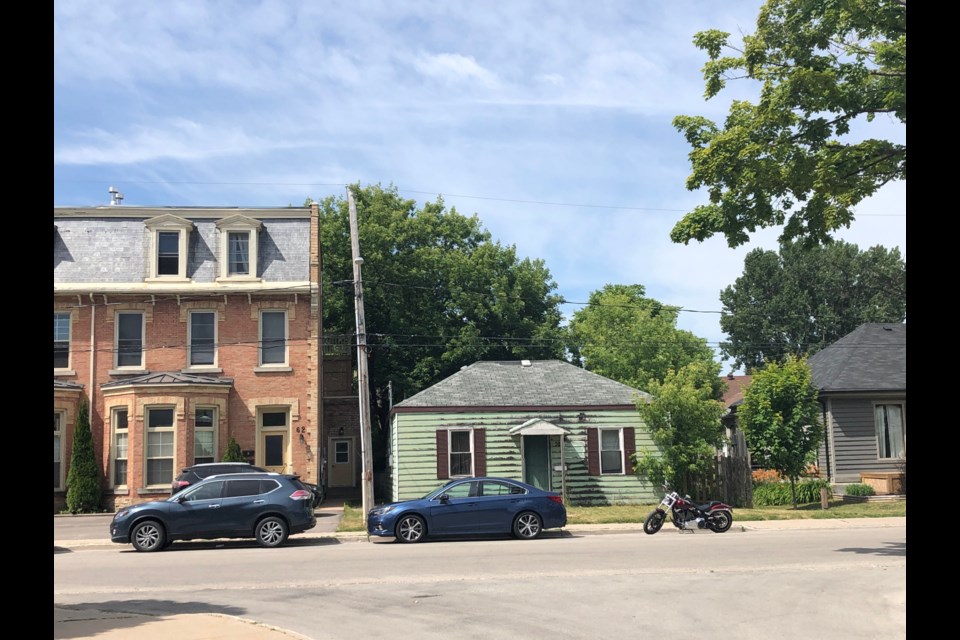A Collingwood councillor is disappointed the town’s bylaw governing the heritage district doesn’t go farther to prevent demolition without replacement.
Recently, a home in the heritage district was demolished (with permits) and a parking lot built in its place.
Collingwood’s heritage committee and council initially denied the permit, but the Local Planning Appeal Tribunal overturned the decision. An engineer’s report indicated the building was beyond saving and could not be made structurally sound again.
As a result, council asked staff to bring forward an analysis of the town’s Heritage Conservation District bylaws concerning demolition of both designated and undesignated buildings within the heritage district boundaries.
The staff report noted council did have authority to deny a demolition permit for a building identified as having significant heritage value within the heritage district. However, staff noted in the case of this property, located at 174 St. Paul Street, the building “lost most of what little ornament it once had,” and was in poor condition.
Councillor Deb Doherty said she understood why the building needed to be demolished, but she wanted another building to go up in its stead. One that reflected the heritage design standards of the area.
“It seems a travesty it was not replaced by a new structure sympathetic to the neighbourhood,” she said. “It’s unfortunate our bylaw didn’t have the teeth to avoid demolition without replacement.”
She was grateful for the staff’s analysis, which she said was a balanced report, but said she wanted to see more of a focus on restoration or demolition with replacement.
Collingwood’s heritage district includes approximately 280 properties, 30 of which are individually designated as heritage properties. A heritage permit is required not only for demolition, but for any alteration, addition, or visible work on the exterior of the building.
The staff report cited several pieces of legislation the town can use when it is considering a demolition request for a building in the heritage district.
The Provincial Policy Statement states significant built heritage resources and landscapes should be conserved.
The planning act directs municipalities to have regard for the conservation of features of significant cultural or historical interest.
The Ontario Heritage Act states council must respond to a demolition application within 90 days of the application in consultation with a municipal heritage committee.
The Collingwood Downtown Heritage Conservation District Plan states available parking is a critical factor in the success of the commercial sector.
“The commercial core is tightly bound by built areas mostly comprised of heritage buildings … the demolition or removal of these for parking purposes would be detrimental to the heritage character of the district, which is ultimately the source of its marketability,” states the heritage district plan.
Doherty agrees Collingwood’s heritage buildings “yield exceptional benefits” for the town. She said the preservation of heritage buildings in the downtown core has contributed positively to real estate values, the viability of the downtown commercial district, and contributes to civic pride, the town’s brand and Collingwood’s “sense of place.”
“There’s the potential for a dangerous evolution if we allow demolition without replacement,” she said.
She added a “philosophical” question to her opposition as well.
“In this modern world, where we’re trying to get away from cars, and encouraging active transportation and using transit, why are we making it easier to have more cars by creating more parking?” she asked.
The staff report concluded stating the conservation and preservation of heritage buildings and structures in Collingwood should continue to be analyzed on a site-by-site basis.
“It is planning staff’s opinion … the demolition of the former building at 174 St. Paul Street represents good planning,” states the report, adding “all future requests for removal or demolition of building or structure within the Heritage District … be independently analyzed on a site-by-site specific basis.”
The chance to once again test the bylaws with a demolition application will come up again soon.
At a recent heritage committee meeting, the owner of 58 St. Paul Street came forward with an application to demolish the building.
He said the building was structurally unfit, and the hydro had been cut off from the building due to safety concerns.
He told the committee he wanted to build a new duplex structure in its place that would “fit” with the other historical buildings in the area.
The heritage committee was hesitant to grant the demolition permit without a formal commitment to what would replace the building.
The property owner didn’t want to invest the money into creating a design and proposed site plan until he knew he could demolish the existing building.
The committee instead requested a heritage impact assessment for the property to support the demolition application.
Doherty knows the application will be before council soon and said she wouldn’t suggest any changes to the current heritage district bylaw until she could see how the 58 St. Paul Street request is handled.
“We shall see, and I will hold my judgement until I see how that process works out,” said Doherty.


